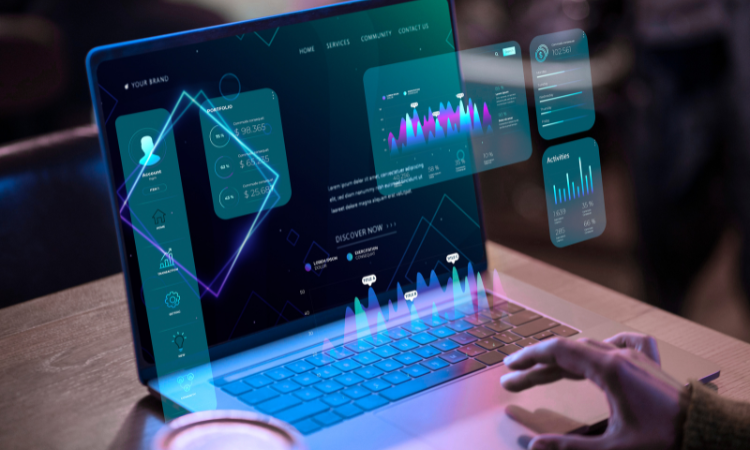You don’t need more feedback. You need to make sense of the feedback you already have.
If you’ve ever sifted through hundreds, maybe thousands, of open-ended survey responses, support tickets, or NPS comments, you know the feeling. You’re swimming in qualitative data, but actionable insights? Those are harder to surface.
That’s because unstructured feedback is messy. Customers don’t follow templates. They speak in stories, vent in reviews, and ramble in interviews. And while that mess contains meaningful insights, it often goes untapped.
This is where thematic coding steps in.
Thematic coding is the process of labeling and categorizing feedback to identify recurring patterns and key themes. It’s the backbone of thematic analysis, helping researchers, CX teams, and analysts transform textual data into meaningful insights they can actually use. But as critical as it is, manual coding is often a bottleneck—slow, inconsistent, and impossible to scale across large data sets. Fortunately, that’s changing with the rise of qualitative data analysis software and AI-powered tools.
In this blog, we will explore what thematic coding is and how it fits into modern qualitative research, the difference between inductive and deductive approaches to coding qualitative data, and how to apply a practical, step-by-step thematic coding process you can start using right away. So, let's get started!
TL;DR
-
Thematic coding is a tactical process within thematic analysis that helps you categorize qualitative data and uncover recurring patterns in open-text feedback.
-
It becomes essential when teams face large volumes of unstructured feedback, need faster insights, or must report defensible themes across channels and teams.
-
Manual methods for thematic coding offer control but don’t scale; automated thematic coding tools dramatically speed up analysis while improving consistency.
-
You should choose deductive coding when you have predefined categories, inductive coding for discovery research, and blended coding when structure meets exploration.
-
From gathering raw data to grouping and refining themes, a structured approach makes your qualitative analysis scalable, reliable, and actionable.
-
From SaaS to healthcare, qualitative researchers use coding to transform raw feedback into decisions that improve journeys, products, and CX outcomes.
-
Inconsistent codebooks, overlapping themes, interpretation bias, and ignoring diverse feedback sources can derail your thematic analysis.
-
Zonka Feedback is an AI insights tool that helps you streamline thematic coding with AI tagging, theme suggestions, sentiment-integrated dashboards, auto-grouping, KPI filters, and role-based insights. You can get early access to its AI Feedback Intelligence platform or sign up for a free trial of its survey and CXM suite to start turning feedback into strategy.
Eliminate Guesswork with AI-Driven Thematic Analysis📈
Prioritize what matters and drive action in real-time. Turn qualitative feedback into measurable insights tied to CSAT, NPS, and churn using Zonka Feedback's AI-powered Thematic Analysis.

What is Thematic Coding in Qualitative Data?
Think of thematic coding as the bridge between raw, unfiltered customer feedback and the kind of insights that drive real business change.
At its core, thematic coding is the process of labeling and categorizing qualitative data like open-ended question responses, support conversations, and interview transcripts, so you can uncover recurring patterns, surface key themes, and begin to see the bigger picture behind what people are saying.
But here's where things often get misunderstood: thematic coding isn’t the same as thematic analysis.
Thematic coding is a tactical step within the broader thematic analysis process. Coding is where you assign labels (codes) to snippets of textual data—think: “frustrating checkout,” “slow response time,” or “easy to use.” Thematic analysis, on the other hand, is the strategic framework you use to interpret those codes, group them into themes, and connect them back to your research question or business goals.
So where does thematic coding fit into the bigger picture?
From identifying what’s driving churn to uncovering feature gaps or service issues, thematic coding gives teams across industries a sharper, faster way to act on what customers are actually saying.
When and Why to Use Thematic Coding?
63% of executives admit they postpone strategic decisions because they can’t pull clear insights from qualitative data. If that sounds familiar, it’s time to swap ad-hoc quote hunting for structured thematic coding. Let us look at the most common scenarios where it becomes essential:
-
Drowning in Open-Ended Feedback: When you're collecting large volumes of open-text responses—like surveys, interviews, or chat transcripts—it's easy to lose track of patterns. Without structure, teams rely on intuition and anecdotes. For instance, A SaaS product team receives 10,000 in-app survey responses after a major UI rollout and needs to spot recurring issues like “search too slow” and “dark-mode glitch”.
-
Feedback Siloed across Teams and Tools: When customer feedback lives in different platforms (Zendesk, surveys, app reviews), it becomes hard to analyze holistically. Thematic coding helps unify and standardize how you tag and interpret it. For instance, An airline’s CX group stitches together call-center notes, NPS verbatims, and social DMs to uncover a common theme of “baggage delays” that wasn’t obvious in any single system.
-
Need Fast Insights from Sentiment-Heavy Data: When your support team, marketing, or social media managers need to react quickly to changing customer sentiment, thematic coding helps identify themes before they escalate. For instance, a fashion retail brand sees a spike in Twitter complaints about an influencer campaign. The CX team codes the social mentions to identify themes like “sizing mismatch,” “delayed shipping,” and “misleading ads” and adjusts messaging accordingly.
-
Pressure to Produce Structured Insights for Leadership: When leadership asks, “What are customers actually saying?” you need more than quotes; you need defensible themes supported by data. For instance, a healthcare provider prepares for a board meeting and uses thematic coding on patient feedback to highlight care quality concerns in specific departments, grouped under themes like “wait time,” “staff empathy,” and “aftercare communication.”
-
KPIs Dip without a Clear Cause: Dashboards show churn, cart abandonment, or NPS dips but qualitative context is needed to understand what's behind the numbers. For instance, a fintech app notices a drop in onboarding completion rates. Coding exit survey responses reveals recurring mentions of “confusing verification process” and “lack of human support,” guiding targeted UX improvements.
-
Green-Field Discovery Research: When you're conducting discovery research or entering a new market, there's no existing taxonomy to work from. Thematic coding allows themes to emerge directly from the data. For instance, An EdTech startup interviews teachers to explore adoption barriers for AI tools. By inductively coding the interviews, the team uncovers themes like “lack of training,” “curriculum misalignment,” and “data privacy concerns.”
-
Consistency across Multiple Researchers or Coders: In collaborative environments, qualitative data can be interpreted differently depending on who reads it. Thematic coding creates a shared language and taxonomy. For instance, a global bank’s VoC and UX groups co-develop a codebook so an insight tagged “branch wait times” in Singapore means the same thing in São Paulo.
Manual vs. Automated Thematic Coding: What’s the Difference?
If your team is still manually tagging open-text responses one by one, you're not doing anything wrong but you're definitely doing it the hard way.
Manual thematic coding means reading every comment, assigning codes, and grouping themes by hand. Automated coding, on the other hand, uses AI to do the same thing, just a lot faster, and at scale. And here’s the catch: most teams don’t realize how much time they’re losing on slow analysis until it’s already too late. In fact, 57% of executives say most decision-making time is wasted on inefficient analysis.
How Manual Coding Works?
It starts with a spreadsheet, a stack of survey responses, and a lot of patience. You read line-by-line, tag key phrases, build your codebook, group your themes, and hope your teammate interprets “checkout friction” the same way you do.
It’s not a bad method, it gives you control and context but it comes at a cost.
Pros of manual coding:
-
You catch tone, sarcasm, nuance—things machines miss
-
Great for sensitive or exploratory research where precision matters
Cons of manual coding:
-
It’s slow—coding 1,000 comments can take days or even weeks
-
Coders interpret things differently, so consistency can slip
-
It just doesn’t scale once feedback starts pouring in
How Automated (AI) Coding Works?
Instead of tagging responses manually, AI uses NLP (natural language processing) to scan comments, cluster related phrases, and assign themes automatically. The more data it sees, the smarter it gets.
Pros of AI coding:
-
It’s fast—what used to take days now takes minutes
-
It’s consistent—same rules, applied across every comment
-
It runs 24/7—so feedback doesn’t queue up overnight or on weekends
Cons to keep in mind:
-
It can miss subtle meaning (like sarcasm or slang)
-
It might need a seed codebook to get started
-
It’s not always transparent how a theme was assigned
So, which approach fits your team? Here's a comparison between the two that can you help you make your mind.
| Approach | Best For | When to Use It | Signals to Watch For |
| Manual | Small-scale, high-stakes feedback | ≤1K comments, deep exploratory work, sensitive topics |
Rich nuance capture, full control over interpretation, and trust in critical or regulated settings
|
| Automated | High-volume, fast-moving, omni-channel feedback | 20K+ comments/month, real-time dashboards, exec-level reporting |
Always-on, scalable coding that standardizes insights and uncovers trends in minutes
|
| Hybrid | Mid-sized recurring datasets where accuracy still matters | 1K–20K comments, ongoing NPS/CSAT, multi-region input |
Balance of speed and depth — human context with AI efficiency |
Types of Thematic Coding: Deductive Coding vs. Inductive vs. Blended Coding
Before diving into the thematic coding process, it’s important to understand the two main approaches that shape how you’ll tag your qualitative data: deductive and inductive coding. Think of these as different lenses for how you see and structure feedback.
What is Deductive Coding?
Deductive coding is like going into a forest with a compass, a map, and a checklist. You already have a set of codes in hand, maybe from previous research, a customer journey map, or business priorities like “delivery issues” or “onboarding confusion.” You apply those codes to the data as you go.
For instance, a CX manager at a telecom company tags every support interaction using pre-set codes like "Billing", "Network reliability", "Agent professionalism" and "Technical issues."
That makes it easy to track which issues are driving up ticket volumes and to report trends in board meetings.
Deductive coding works well when:
-
You have a consistent research focus or KPI
-
You need to compare results over time
-
You’re aligning qualitative insights with a framework analysis or internal reporting taxonomy
What is Inductive Coding?
Inductive coding flips the script. You don’t bring assumptions. You bring curiosity. You read through the data, code what stands out, and allow themes to emerge naturally from the comments. It's perfect when you’re in discovery mode, or exploring a new space without predefined categories.
For instance, a health-tech startup interviews patients about their experience with virtual care. They didn’t expect these themes to surface:
-
“No eye contact with doctors”
-
“Hard to find a quiet space at home”
-
“Felt more comfortable opening up”
These insights shape not just UX improvements but how they train physicians on virtual empathy.
Inductive coding works well when:
-
You’re running qualitative research like discovery interviews, focus groups, or open-ended surveys
-
You don’t know what themes to expect
-
You want to capture nuance and depth—even things that don’t fit into neat buckets
That being said, if you want to go deeper into the frameworks behind these approaches, read our blog on thematic analysis methodologies, including deductive, inductive, and reflexive thematic analysis, and when to apply each in your research.
Blended Coding: The Best of Both Worlds
Here’s the truth: Most enterprise teams blend both. You might start with 5-10 strategic codes (like “UX issues,” “missing features,” or “support delay”), then adapt and expand as new patterns emerge.
💡 Pro tip: A blended model works beautifully with Zonka Feedback’s AI-assisted coding. You can seed the system with key business themes, then let it surface additional tags from raw data like NPS verbatims or app reviews.
Thematic Coding Process: Step-by-Step Workflow to Turn Raw Feedback into Strategy
Once you’ve chosen how to code—manually, with automation, or somewhere in between—the next question is: What does an effective coding process actually look like in practice? Let’s break down the coding qualitative feedback workflow—the part that builds reusable, trustworthy themes from raw text data.
1. Gather Your Raw Data: Know What You’re Working With
Thematic coding starts before the first tag is ever applied. It begins with collecting the right kind of data and making sure it's clean, complete, and ready for analysis.
But what qualifies as “right” data? Anything that captures the real voice of your users or customers. That might be:
-
Open-ended survey responses (NPS, CSAT, onboarding)
-
Live chat conversations
-
Customer interviews or support call transcripts
-
Product review excerpts
-
Chatbot logs
-
App store reviews or community forum threads
The common thread? They’re unstructured, qualitative, and rich in meaning. This is the raw material from which themes are born.
For instance, after a sharp increase in cancellations, a fintech team pulls 4,200 exit survey responses asking users, “Why did you decide to leave?” It’s the perfect use case for thematic coding: high volume, open text, and high impact.
But here’s the catch: if that raw data is cluttered, think duplicate responses, inconsistent formatting, or personally identifiable info, it slows everything down. Hence, you must remove duplicates, standardize formatting (timestamps, punctuation) and anonymize sensitive data (names, IDs, emails).
2. Create Initial Codes: Tag the Text that Matters
Now that your qualitative data is prepped, it’s time to roll up your sleeves. This is the heart of thematic coding—where you begin tagging parts of your data with meaningful labels, or “codes.”
Each code captures a unit of meaning in the text—maybe a pain point, suggestion, or emotion. It might be a phrase like “unclear pricing,” “quick response,” or “confusing checkout.” You’re not interpreting yet, just capturing what’s being said, one insight at a time.
Remember those coding approaches we looked at earlier—deductive, inductive, and blended? This is where you start putting them into practice. Whether you’re applying predefined categories (deductive), letting insights emerge from scratch (inductive), or blending both, your strategy here lays the foundation for everything that follows.
For instance, after launching a new product line, an e-commerce CX team combs through 500 customer reviews. They begin with a few familiar tags like “shipping delay” and “missing filters” but as they go deeper, unexpected themes like “can’t find size guide” emerge, expanding their taxonomy in real time.
Now, if you are coding manually, you can expect ~20 minutes per 100 comments. With thematic analysis tools like Zonka Feedback that offers AI tagging, that drops to ~3 minutes, with consistent labeling across channels.
💡Pro Tip: This is the moment when you start building sub-themes at scale. The more precise your codes, the sharper your eventual insights. And the better your taxonomy now, the easier it is to scale your analysis in future waves.
3. Build a Codebook: Keep Your Team Aligned
When multiple people are coding qualitative data, one person’s “slow service” might be another’s “unresponsive support.” A shared codebook solves this by aligning definitions, examples, and tagging criteria—so everyone speaks the same analytical language.
Beyond keeping things tidy, a well-structured codebook reduces interpretation gaps, accelerates onboarding, and ensures your qualitative analysis stays consistent over time.
Whether you're conducting reflexive thematic analysis in qualitative research or applying a more structured framework analysis, having a centralized reference anchors your process and improves the reliability of insights—especially in large teams or long-term research.
Here’s what a solid codebook should include:
-
Code name – e.g. “Delayed Response”, “App Glitch”, “Missing Onboarding Step”
-
Clear definition – plus inclusion/exclusion criteria so coders know exactly when to apply it
-
Example excerpts – real quotes or verbatims from your dataset
-
Linked themes or subthemes – to help build a stronger thematic framework
-
Owner, version, date updated – especially useful for audit trails and team reviews
For instance, you can maintain a shared Notion codebook that defines 45+ standardized codes across categories like support experience, UI feedback, and feature suggestions. Teams across CX, Product, and Research can tag feedback using the same language, whether it’s a survey verbatim, chat transcript, or app review, ensuring consistency across the entire thematic coding process.
You can start simple with Google Sheets, Airtable, or Notion. But as your analysis scales, you can use AI survey tool like Zonka Feedback that offers a Central Theme Library that syncs your taxonomy across surveys, channels, and teams.
4. Group Codes into Themes and Subthemes
Once your codes are in place, the next step in the thematic coding process is where clarity begins to emerge: grouping similar codes into broader themes and subthemes. Grouping codes creates a systematic and rigorous approach to analyzing qualitative data — one that enables cross-functional teams to see the signal in the noise.
As qualitative researchers know, identifying themes is what transforms raw feedback into meaningful patterns you can act on. This step aligns closely with Braun and Clarke’s thematic analysis steps, where coded data extracts are organized into categories that reflect your research questions, operational goals, or customer experience KPIs.
For instance, a healthcare provider sees thousands of open-ended survey responses. Codes like “doctor didn’t explain clearly,” “long wait times,” and “rushed consultation” are grouped under a parent theme: Care Quality with subthemes such as Staff Communication, Scheduling Delays, and Empathy Gaps. This kind of clarity is vital for building better patient journeys.
In Zonka Feedback, AI-assisted clustering even suggests emerging themes as new responses come in so your taxonomy evolves in real time without losing structure.
Sample Industry Taxonomies: What Themes & Sub-Themes Look Like in Practice
Below is a structured table illustrating how different industries can organize qualitative feedback using content analysis, narrative analysis, or framework analysis methods.
| Industry | Theme | Subthemes |
| E-commerce | Shipping Issues | Delayed delivery, Tracking errors, Damaged packaging |
| Product Experience | Inaccurate sizing, Missing details, Poor material quality | |
| SaaS/Product | Onboarding Challenges | No walkthrough, Confusing UI, Missing help docs |
| Feature Adoption Friction | Hard-to-locate tools, Lack of training, Buggy experiences | |
| Healthcare | Care Quality | Staff empathy, Discharge confusion, Wait times |
| Patient Communication | Medical jargon, No follow-ups, Unclear diagnosis | |
| BFSI/Fintech | Application Friction | Too many forms, Verification loops, Long approvals |
| Support Responsiveness | Call delays, Scripted responses, Poor escalation handling | |
| EdTech/Research | Learning Barriers | Interface distractions, No personalized pacing |
| Teacher Feedback | Admin burden, Content misalignment, Platform usability |
5. Refine and Merge Themes: Strengthen the Signal
Once your initial themes are grouped, it’s time to refine them. This is a critical step in the data analysis process, especially for teams analyzing qualitative data across multiple sources and touchpoints.
This process isn’t just about tidying up, it’s about identifying key themes and building structure you can rely on. In qualitative content analysis and other qualitative research methods, skipping this step risks creating messy, inconsistent outputs that miss nuanced data or make it harder to define and name themes clearly.
Here’s what refinement often includes:
-
Merging overlapping codes that reflect the same concern or pattern
-
Splitting broad or ambiguous codes into more focused subthemes
-
Validating code structures with multiple coders or stakeholder teams
-
Removing outliers that don’t align with your theoretical framework or research objectives
To understand this better, say, a telecom CX team sees two codes popping up again and again: “confusing invoice” and “unexpected charges.” On review, they realize they’re describing the same experience. They merge them into a stronger subtheme—Billing Clarity—nested under a broader theme like Customer Trust.
The expected time to complete this step would take ~60 minutes per 500 comments if done manually, depending on your familiarity with the domain and how well the data is coded. With Zonka Feedback, you can speed that up to ~10 minutes using features like AI-powered auto-grouping and sentiment layering, which suggest potential merges and help identify patterns that humans may overlook.
6. Interpret Themes and Connect to KPIs
Here’s where all your hard work begins to pay off. Once themes and subthemes are refined, it’s time to interpret them — not in isolation, but in context of business metrics that drive decisions. This step isn’t just about creating insights, it’s about connecting qualitative data to outcomes that matter. You’re bridging the gap between what people say and what your dashboards show.
For teams conducting thematic analysis, this is the moment you move from tagging to storytelling. It’s when creating codes starts influencing roadmaps, investments, and OKRs.
To understand this better, say a A SaaS product team identifies the subtheme Feature Discoverability during onboarding feedback analysis. When mapped against quantitative data, they find users mentioning this theme are 38% less likely to convert from trial to paid — a clear business signal buried in qualitative nuance.
And for those using methods like grounded theory, discourse analysis, or template analysis, this step is crucial to contextualizing your findings — turning potential themes into practical strategy. Even if your team follows an interpretative phenomenological analysis approach, this final interpretation loop allows you to honor the depth of human sentiment while surfacing actionable patterns.
In Zonka Feedback, this step is fully streamlined. You can layer themes with sentiment scores, apply KPI filters, and spot trend spikes instantly — all visualized in dynamic dashboards and even exported as a thematic map for leadership review.
Real-Life Thematic Analysis Coding Examples
Now that you've seen how thematic coding works step by step, let’s bring it to life.
Below are real-world examples across industries — each one tracing the path from raw feedback to final insight. Whether you're analyzing qualitative data in SaaS, healthcare, retail, or finance, the workflow stays consistent: identify themes, link to KPIs, and drive action.
| Industry | Customer Comment | Code | Theme | What Changed |
| E-commerce | “The package took 10 days and tracking info was useless.” | Delayed shipping, Tracking gap | Delivery Experience | Ops team introduced a real-time order tracking widget; CSAT on delivery improved 12% |
| SaaS/Product | “I couldn’t find the analytics feature — had to ask support.” | Hard-to-find feature | Onboarding Friction | Product team added a feature walkthrough tooltip in the onboarding flow. Trial-to-paid rate jumped 8% |
| Healthcare | “Doctor was kind, but no one told me when I could go home.” | Discharge confusion, Empathy | Care Communication | Discharge team created a standardized post-consultation summary to reduce confusion |
| Fintech/BFSI | “Why so many forms just to open a simple account?” | Long application, Friction | Signup Complexity | Reduced steps in the onboarding flow; time-to-open-account dropped by 25% |
| EdTech/Research | “It’s hard to stay focused with so many UI distractions.” | Interface noise, Focus issues | Learning Environment | UX team simplified layout and added ‘distraction-free mode’ for long study sessions |
Each of these examples reflects how qualitative researchers and customer-facing teams turn unstructured voice-of-customer data into structured, repeatable insights using a systematic and rigorous approach to thematic coding.
From defining and naming themes to linking them with behavioral metrics, the goal is always the same: build a thematic framework that supports smarter, faster decisions.
💡 Want to try this with your own data? Zonka Feedback makes it easy to upload open-ended comments, auto-tag themes, and see live connections to satisfaction, churn, or feature requests — all in one dashboard.
Common Mistakes in Thematic Coding & How to Avoid Them
Even with the best intentions, thematic coding can easily go off-track. Whether you're a researcher, CX lead, or insights analyst, recognizing these mistakes early helps you build a more structured, defensible, and scalable analysis process.
Here are some of the most frequent challenges teams face when analyzing qualitative data — and what you can do instead.
1. Inconsistent Coding Rules
One coder tags a comment as “slow resolution,” another tags it “support delay.” Over time, you end up with fragmented codes that muddy your data analysis and weaken your final report.
Why it happens: No shared taxonomy, unclear definitions, or lack of onboarding for new coders.
How to fix it:
-
Maintain a centralized codebook with code definitions, usage guidelines, and example excerpts.
-
Use tools like Zonka Feedback’s Central Theme Library to enforce consistency across teams.
-
Include codebook training during team onboarding, especially for longitudinal research.
Overlapping or Bloated Themes
When everything gets tagged, nothing stands out. You may find yourself with 60+ themes, many of which overlap or repeat.
Why it happens: Lack of refinement between coding and theme-building stages; no pruning.
How to fix it:
-
Use a systematic and rigorous approach during theme validation—merge redundant codes and split vague ones.
-
Follow a flexible method: let themes evolve but revisit them as your data set grows.
-
Thematic analysis software offer auto-suggestions for merging similar tags, reducing manual guesswork.
Bias in Interpretation
Coding isn’t objective by default. Without safeguards, personal bias or a researcher's theoretical commitments can skew how data is tagged and which themes get prioritized.
Why it happens: Coders bring in assumptions or focus on confirming hypotheses.
How to fix it:
-
Use multiple coders to validate results and reduce interpretation bias.
-
Conduct calibration sessions where team members tag the same data and reconcile differences.
-
Keep a record of your framework, research goals, and analysis decisions—especially useful in regulated industries.
4. Ignoring Other Qualitative Data Sources
Relying solely on surveys or support logs may cause you to miss deeper insights from interviews, chat logs, app reviews, or social listening.
Why it matters: Each source reveals different emotional and contextual depth, adding layers to your final analysis.
How to fix it:
-
Triangulate by integrating multiple data sources.
-
Use thematic analysis software that can consolidate and tag feedback across formats.
-
Expand your data collection strategy based on touchpoints most relevant to your ICPs.
How Zonka Feedback Supercharges Your Thematic Coding?
By now, you’ve seen how thematic coding turns messy qualitative data into clear, actionable themes. But doing that at scale across surveys, channels, and teams isn’t easy. That’s where Zonka Feedback comes in.
Zonka Feedback blends the best of manual insight and automation to simplify your entire coding workflow without losing context, nuance, or control. Here’s how it supports your team at every stage of the thematic coding process:
-
AI-Powered Tagging & Theme Suggestions: Instead of starting from a blank slate, let Zonka Feedback's NLP engine scan your responses and suggest high-frequency codes and emerging themes. You stay in control — the AI just gets you there quicker.
-
Central Theme Library: Maintain one shared, version-controlled taxonomy across CX, Product, and Research. Whether you're tagging “shipping delay” in e-commerce or “agent empathy” in healthcare — everyone’s using the same playbook.
-
Sentiment-Integrated Themes: Every theme comes layered with sentiment scores, so you don’t just know what people are talking about, you know how they feel about it. You can use this to spot issues like "pricing confusion" turning from neutral to negative, before it affects retention.
-
Auto-Grouping & Refinement: Zonka's AI Feedback Intelligence identifies overlapping tags and suggests smart merges, splits, or reclassifications based on new patterns in your qualitative data so that you don't have to do the manual grind.
-
Link Themes to KPIs: Track how specific themes impact your key metrics — CSAT, churn, onboarding completion, or trial-to-paid conversion. Want to know what’s pulling down your NPS this quarter? The data will tell you.
-
Role-Based Dashboards: Get dashboards that work the way you do. Whether you're a CX lead watching detractor spikes, a product manager tracking UX friction, or an insights team presenting themes to leadership, everyone gets what they need, fast.
-
Trend Alerts & Heatmaps: Get notified when certain themes cross volume thresholds or sentiment dips. Use heatmaps to visualize shifts over time, perfect for spotting brewing issues or proving ROI to stakeholders.
Conclusion
When done right, thematic coding doesn’t just organize your data, it gives your teams a clearer line of sight into what customers actually experience, feel, and expect. Whether you're decoding NPS comments, support transcripts, or discovery interviews, coding qualitative feedback transforms scattered input into structured insight.
It helps you move beyond guesswork and toward efficient analysis. And with the right technology in place, that process becomes even faster, sharper, and more actionable.
Zonka Feedback is one such customer experience tool that brings structure and speed to your qualitative analysis. With features like AI-assisted theme detection, sentiment-layered tagging, auto-grouping of codes, and a dynamic theme library, it helps you go from scattered feedback to clear insights in a fraction of the time. Whether you're working with open-ended surveys, support chats, or reviews or more, Zonka Feedback makes it easy to identify recurring themes, build subthemes at scale, and align teams with consistent, real-time thematic coding.
Ready to uncover deeper insights from your qualitative feedback?
Get early access to Zonka’s AI Feedback Intelligence platform or if you’d like to explore its existing survey and CXM suite, sign up for a free trial and start turning customer conversations into confident decisions.











